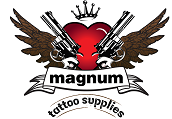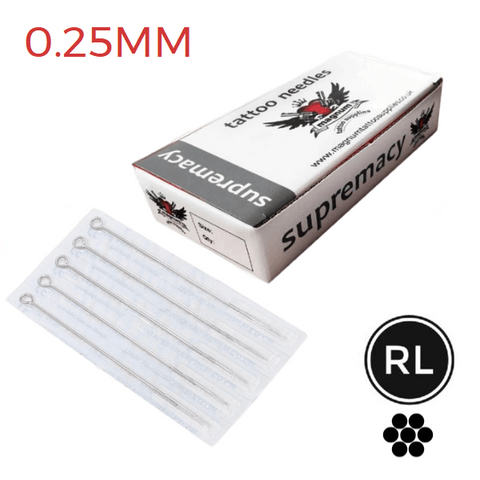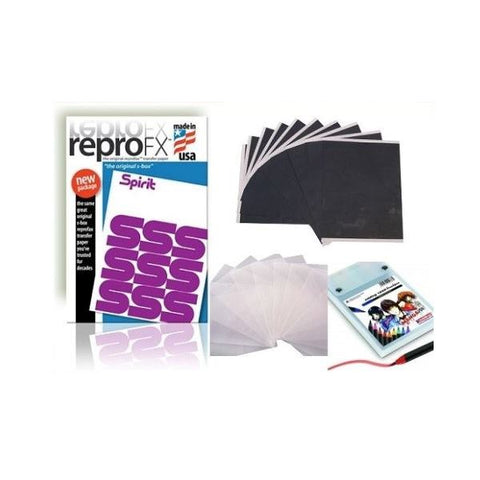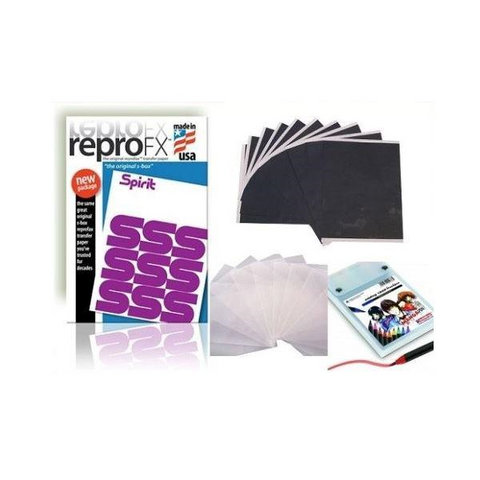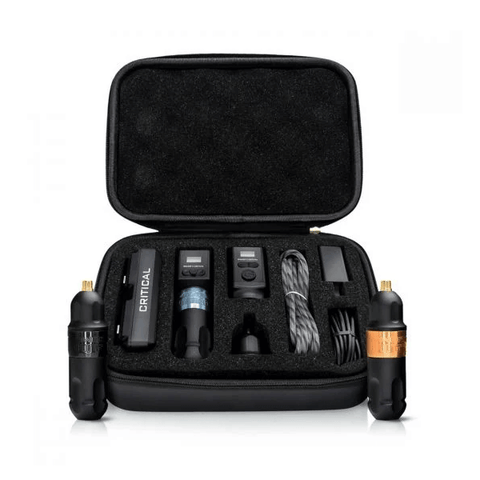How to tattoo outlines for new artists: Step-by-step tutorial
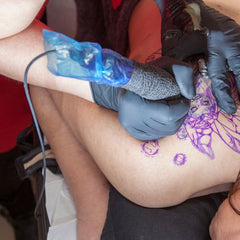
Starting as a new tattoo artist can be tough, especially when drawing perfect outlines. It's easy to run into issues like shaky lines, uneven thickness, or even causing too much pain for your client.
Getting the needle depth just right is tricky, and making mistakes early on can be discouraging. So, we'll simplify the process, offering clear steps to improve your outlining skills and focus on building your confidence.
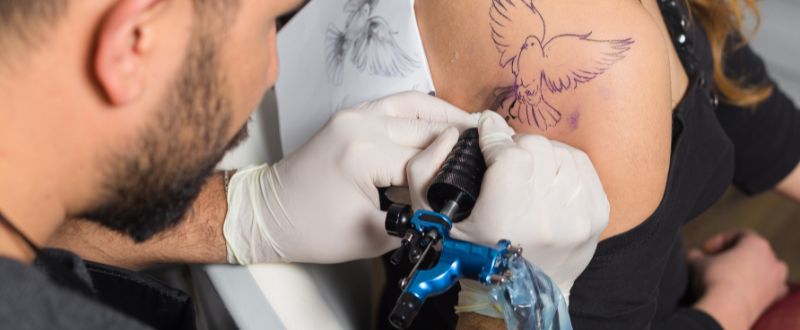
What are tattoo outlines and their purpose?
Tattoo outlines are the initial lines inked onto the skin that establish the basic shape and design of a tattoo. They act as a guide for the entire tattooing process, providing structure and definition to the artwork. The purpose of tattoo outlines is to ensure that the final piece has clear, precise boundaries and details.
Moreover, outlines are crucial because they determine the tattoo's overall appearance, ensuring the design is recognisable and accurately represents the artist's vision. They also make filling in colours or adding shading easier, as the outlines create distinct areas within the design.
In essence, tattoo outlines are the foundation upon which the rest of the tattoo is built, setting the stage for a successful and visually appealing final piece.
The best tattoo needle for outlining
The best tattoo needle for outlining is typically a round liner needle, known for its precision and ability to create crisp, clean lines. Round liners have multiple needles arranged in a circle, making them ideal for detailed work, including intricate designs and fine lines. The "RL" label stands for round liner, indicating their specific use for outlining purposes. You can check out our Round Liners (RL) Tattoo Needles here on our website for a sure quality needles.
If you need thicker and bolder lines, consider using a loose round liner. This type of needle allows you to lay down crisp, strong lines while maintaining control over the thickness. When you're working on areas that demand a thicker outline, such as back pieces, or when you want to emphasise certain parts of your design, using a three or five-needle outliner can help you achieve a smoother, more pronounced line.
Choosing the number of needles in a round liner setup lets you customise the thickness and sharpness of your outlines. You might opt for fewer needles for finer details, whereas more needles can produce bolder lines. This flexibility allows you to tailor your tool choice to the specific needs of each tattoo, ensuring you can deliver the best result for your client.
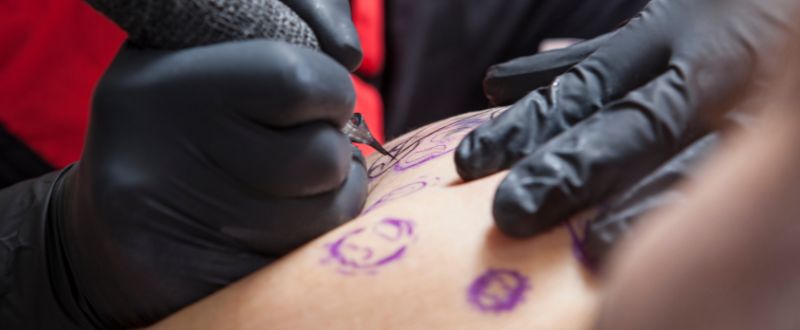
List of tools for tattoo outlining
Besides the needle, several other tools are essential for tattoo outlining:
- Tattoo machine: The device to which you attach your needles. It's crucial for the outlining process, providing the power and precision to transfer ink to skin.
- Tattoo ink: High-quality black or dark-coloured ink is used for outlines, ensuring the lines are vivid and lasting. You can check our collection of black inks on our website, like our Dynamic Triple Black ink.
- Power supply: This regulates the flow of electricity to your tattoo machine, allowing for consistent speed and needle movement.
- Foot pedal: A tool for controlling your tattoo machine's power supply hands-free, allowing you to concentrate fully on the outlining process.
- Stencil materials: Including stencil paper and transfer solution, are used to transfer your design onto the skin accurately before outlining.
- Skin preparation supplies: Items like razors (for shaving the area to be tattooed), disinfectants (for cleaning the skin), and barrier creams (to protect the skin and improve stencil transfer).
Understanding and assembling the right tools is the foundation of any good tattoo, but it is especially important in outlining.
How to outline a tattoo
With a firm grasp on what outlines are and the tools required, it's time to learn the actual process of outlining a tattoo.
Step 1: Design preparation
Start by finalising the tattoo design. Use a pencil to sketch your idea on paper, refining it until you and your client are satisfied. Once the design is ready, transfer it onto stencil paper either by hand or using a thermal printer.
If you're eager to learn more about tattoo stencilling and take your skills to the next level, explore our comprehensive guide on "How to make a tattoo stencil like a pro: Step-by-step". Mastering this technique can greatly enhance your tattooing process.
Step 2: Skin preparation
Clean the skin area where the tattoo will be applied using a disinfectant. Shave any hair to ensure a smooth canvas. After shaving, clean the skin again to avoid any irritation or infection.
Step 3: Applying the stencil
Apply a thin layer of stencil transfer solution to the prepared skin area. Place the stencil paper onto the skin, pressing it evenly. Carefully remove the paper after a few seconds, leaving a clear blueprint of your image design on the skin.
Step 4: Setting up your equipment
Assemble your tattoo machine by attaching the appropriate round liner needle. Fill ink caps with the tattoo ink you'll be using for the outline. Ensure your power supply is connected to the tattoo machine via the clip cord and that the foot pedal is within comfortable reach.
Step 5: Outlining the tattoo
Dip your needle into the ink, then start outlining the tattoo by following the stencil lines. Keep the skin taut with your free hand to ensure smooth, consistent lines. Work from the bottom up if you're right-handed (or top-down if left-handed) to avoid smearing the stencil. Use a consistent speed and pressure to create even lines.
Step 6: Cleaning and inspecting
Wipe away excess ink and blood with a clean, damp cloth as you work to keep the area clean and to check the quality of your lines. Once the outline is complete, thoroughly clean the tattooed area and inspect the outline to ensure it's even and accurate. Make any necessary touch-ups.
Step 7: Tattoo aftercare advice
Cover the outlined tattoo idea with a thin layer of tattoo aftercare ointment and a sterile bandage. Provide your customers with aftercare instructions, including keeping the tattoo clean, avoiding direct sunlight, and not submerging it in water for prolonged periods.

Techniques in outlining a tattoo
- Stretch the skin: Keep the skin taut to create a smooth surface.
- Angle and speed: Maintain a consistent angle and steady speed for uniform line thickness.
- Starting and stopping: Begin with a small anchor point and proceed with smooth strokes.
- Wiping: Regularly wipe away excess ink to keep the area clear.
- Adjusting depth: Fine-tune the needle depth for optimal ink placement.
- Checking symmetry: Periodically step back to assess the symmetry and alignment of the design.
- Layering lines: Overlap lines carefully for thicker or bolder outlines.
- Minimising touch-ups: Aim for precision to reduce the need for later corrections.
- Managing pain and bleeding: Adjust technique to manage client discomfort and minimise bleeding.
- Hydration: Keep the body skin slightly lubricated to ease the needle's passage.
- Continuous communication: Check in with the client about comfort and adjust as needed.
Final words
Knowing how to get a good tattoo outlines takes time and practice, but it's a crucial skill for new tattoo artists. This guide has given you the basics to get started. Remember, every tattoo artist was once a beginner, so be patient with yourself. Practice as much as you can, learn from your tattoo mistakes, and don't hesitate to ask for advice from experienced artists.
With dedication and effort, you'll see your skills improve, and before you know it, you'll be creating clean and beautiful outlines with confidence. Keep at it, and enjoy the journey!
- Tags: how-to guide tattoo outlines
- Mark Joshua Luz
